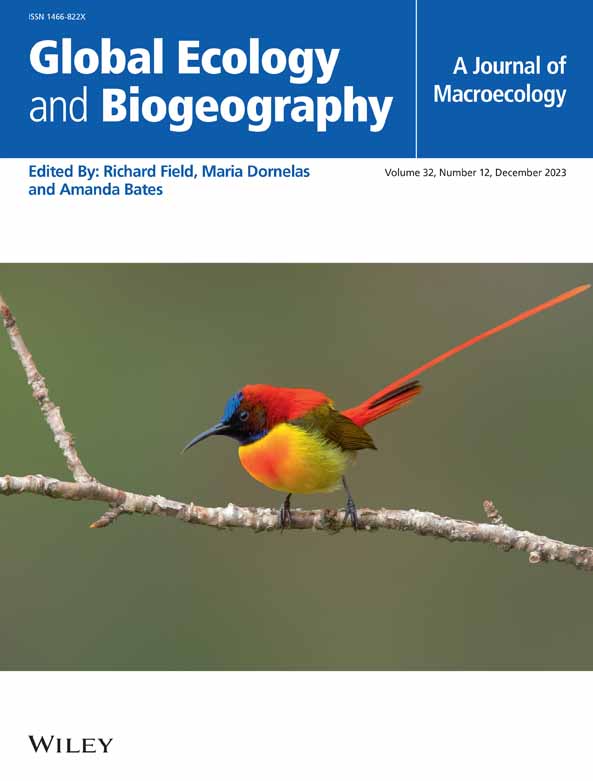Forest Productivity Decreases in Response to Recent Changes in Vegetation Structure and Climate in the Latitudinal Extremes of the European Continent
Abstract
Aim
Climate change is driving increasingly frequent and intense extreme climatic events, pushing many forests worldwide beyond their physiological thresholds. Despite the major role played by forests in the global carbon cycle, climate change threatens the future potential for carbon sequestration in forests. Hence, studies of recent changes in stand productivity and the underlying drivers over large areas are critical to understand and assess the forest carbon sink. We aimed to describe recent changes in forest productivity in the latitudinal extremes of the European continent and the role of climate and climate change in driving these patterns.
Location
Latitudinal extremes of the European continent (Spain and Sweden).
Time Period
From 1980s to the present.
Major Taxa Studied
Trees.
Methods
We analysed data from > 13,900 plots in Mediterranean, temperate and boreal regions using three consecutive surveys from the Spanish and Swedish National Forest Inventories (NFI). Generalised linear models were parameterised to assess how forest structure, climate and climatic anomalies (mean temperature, annual precipitation, drought, heatwaves) influenced forest productivity across two time periods.
Results
Despite increases in stand basal area, forest productivity declined over time. The effects of recent climate change intensified, with temperature anomalies increasingly and negatively impacting productivity in most regions. Region-specific effects were observed: Heatwaves and reduced precipitation in the Mediterranean, intensified droughts in temperate regions and increased precipitation in boreal areas further influenced productivity dynamics.
Main Conclusions
Our results showed a marked decrease in forest productivity due to climatic warming over time and a differential sensitivity to extreme climatic events across regions, which will affect multiple dependent ecosystem functions. Our findings provide further evidence that altered forest productivity due to climate change may hinder the carbon sink capacity of European forests.

 求助内容:
求助内容: 应助结果提醒方式:
应助结果提醒方式:


